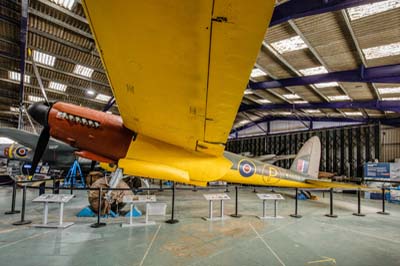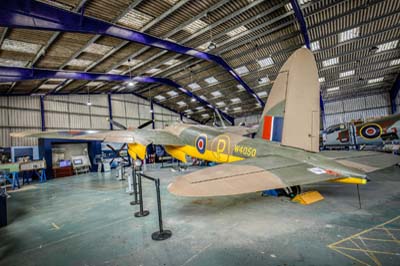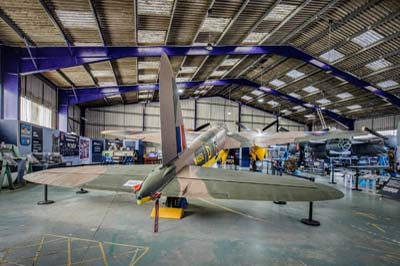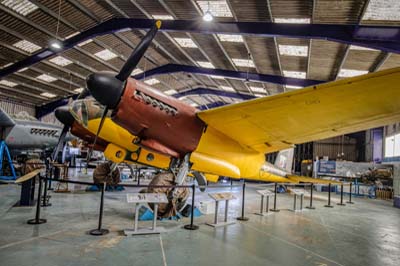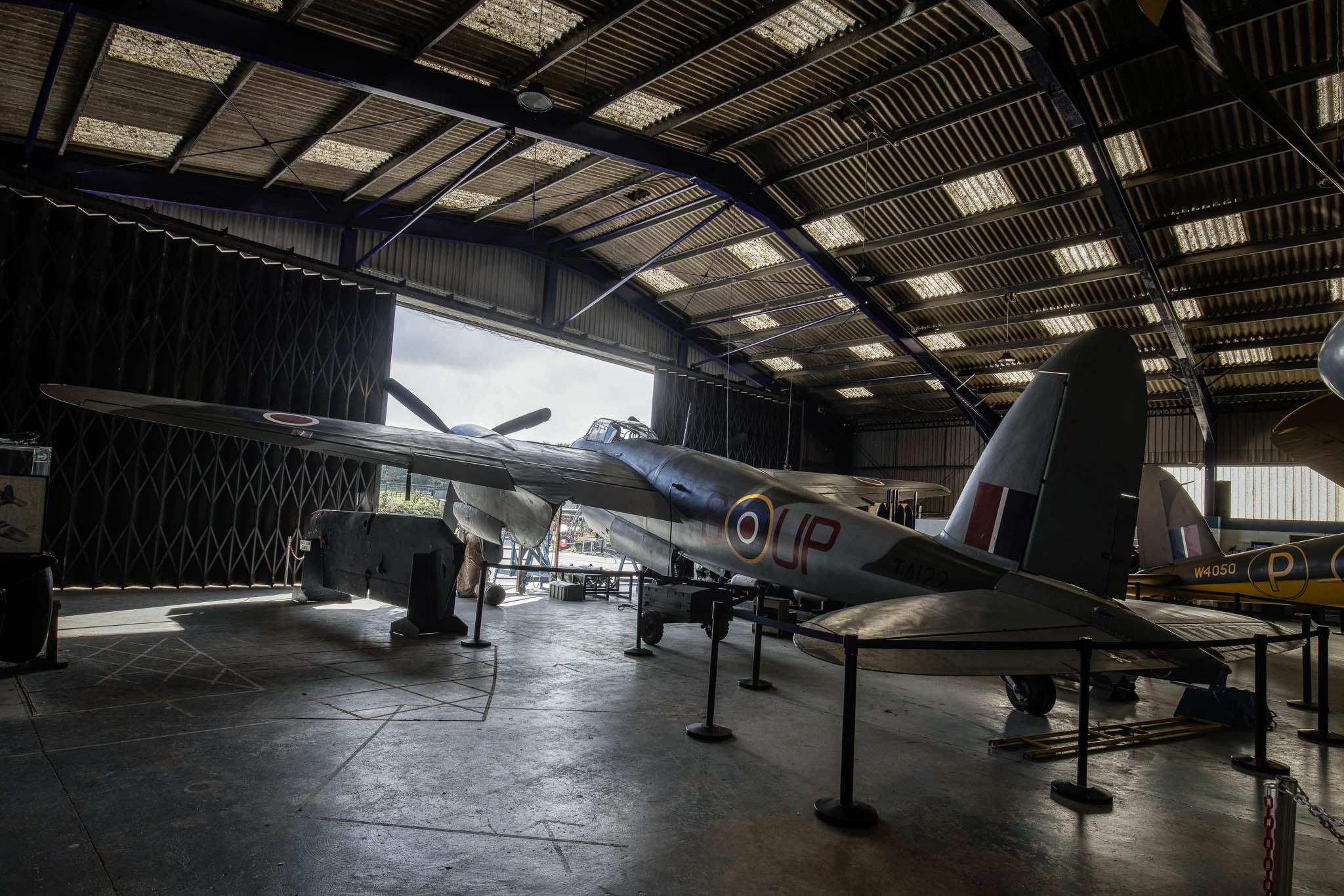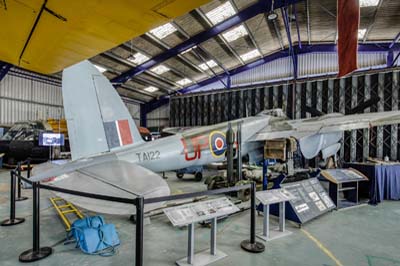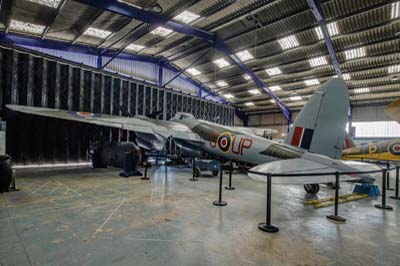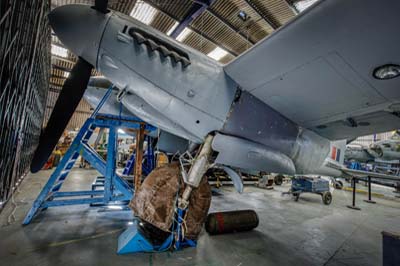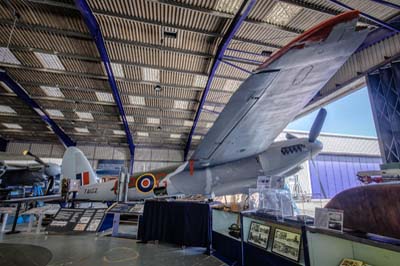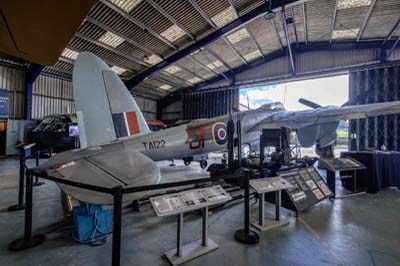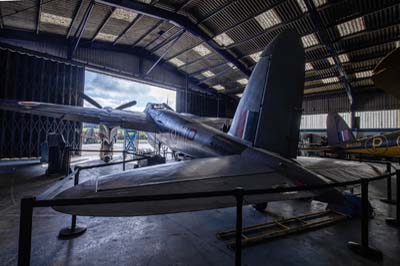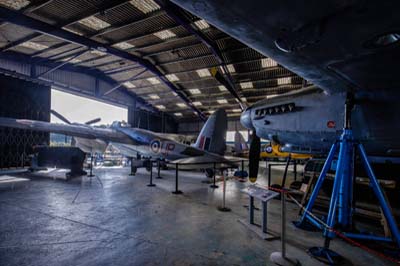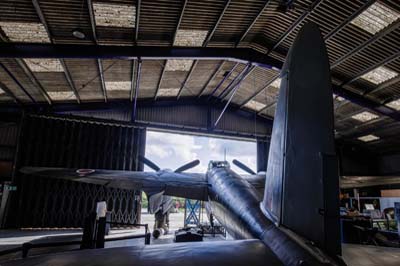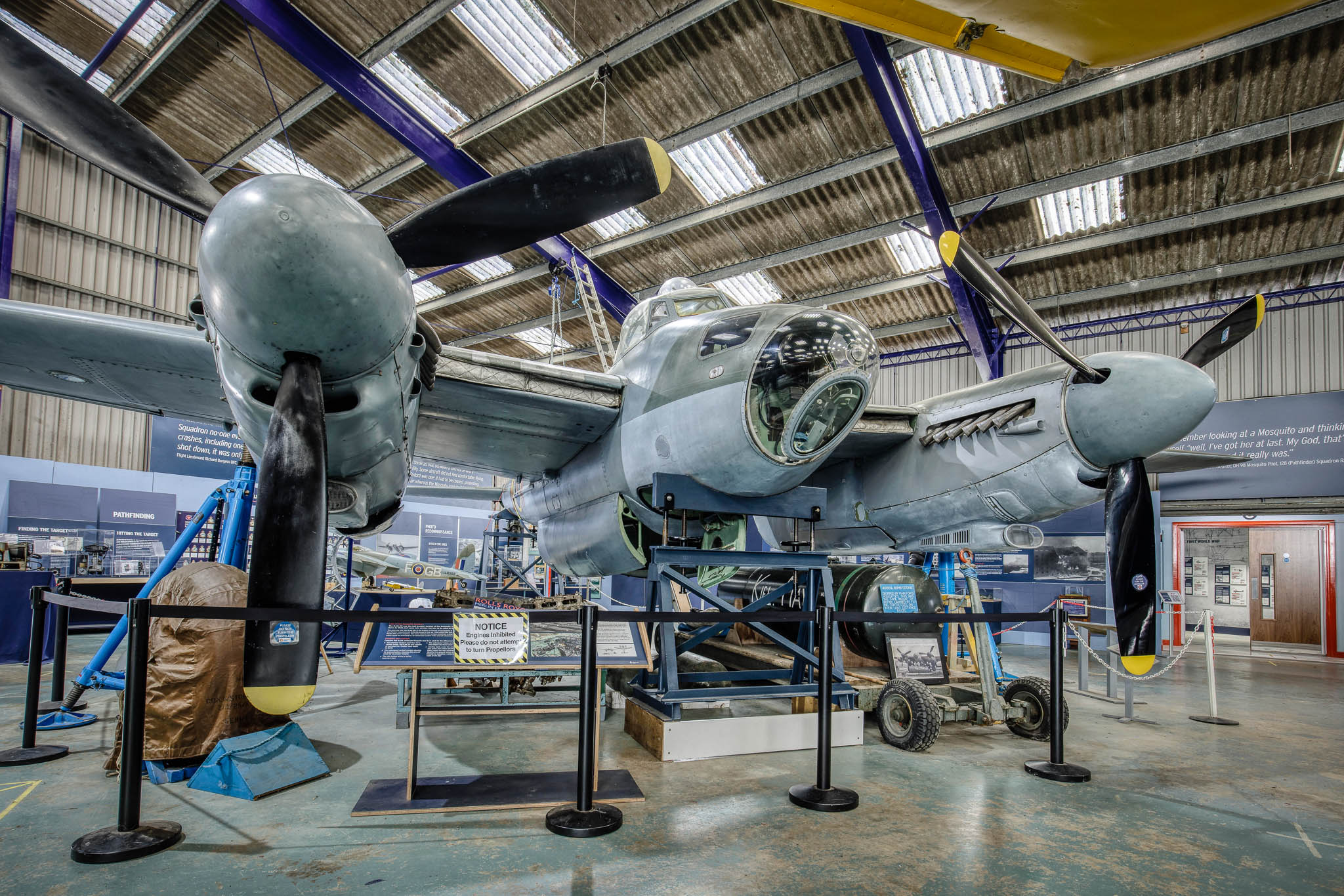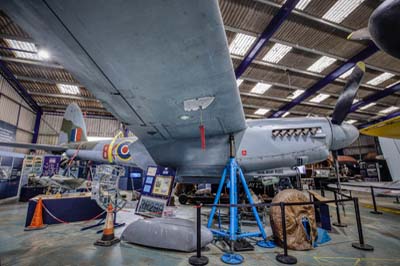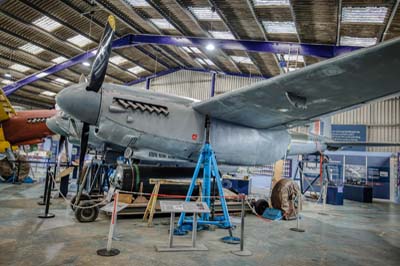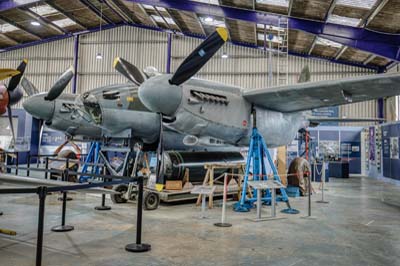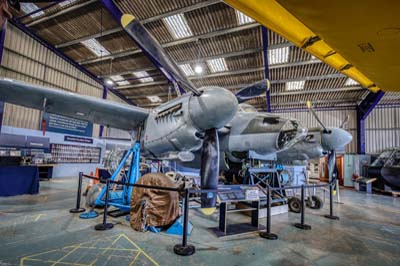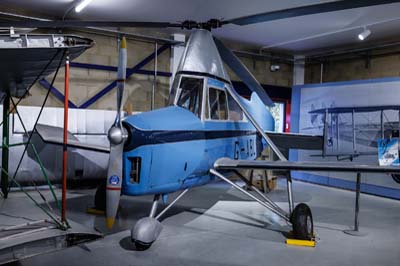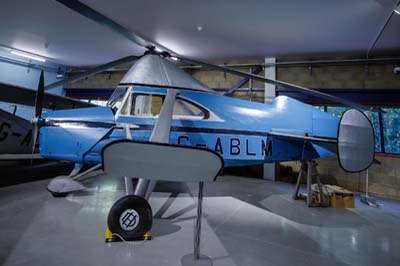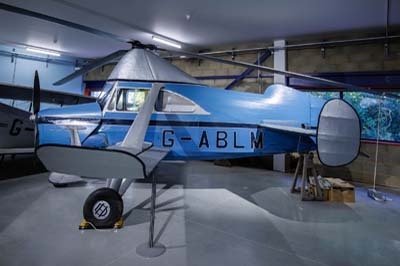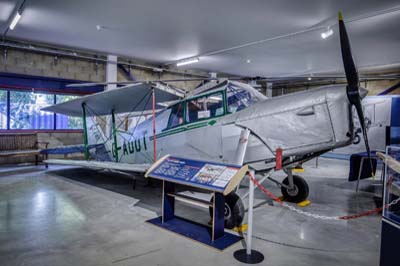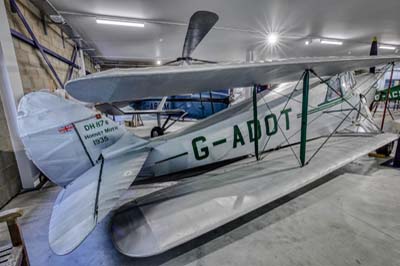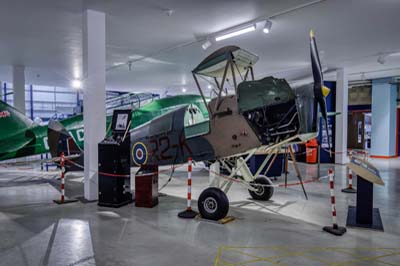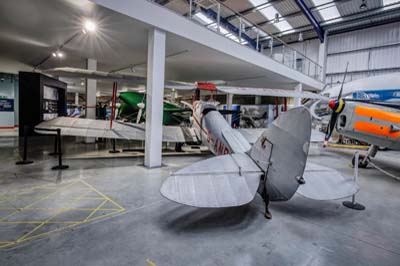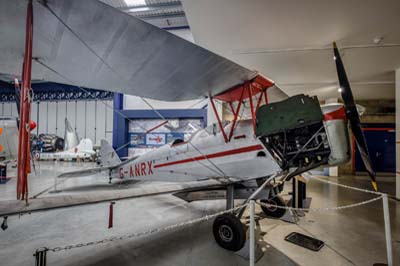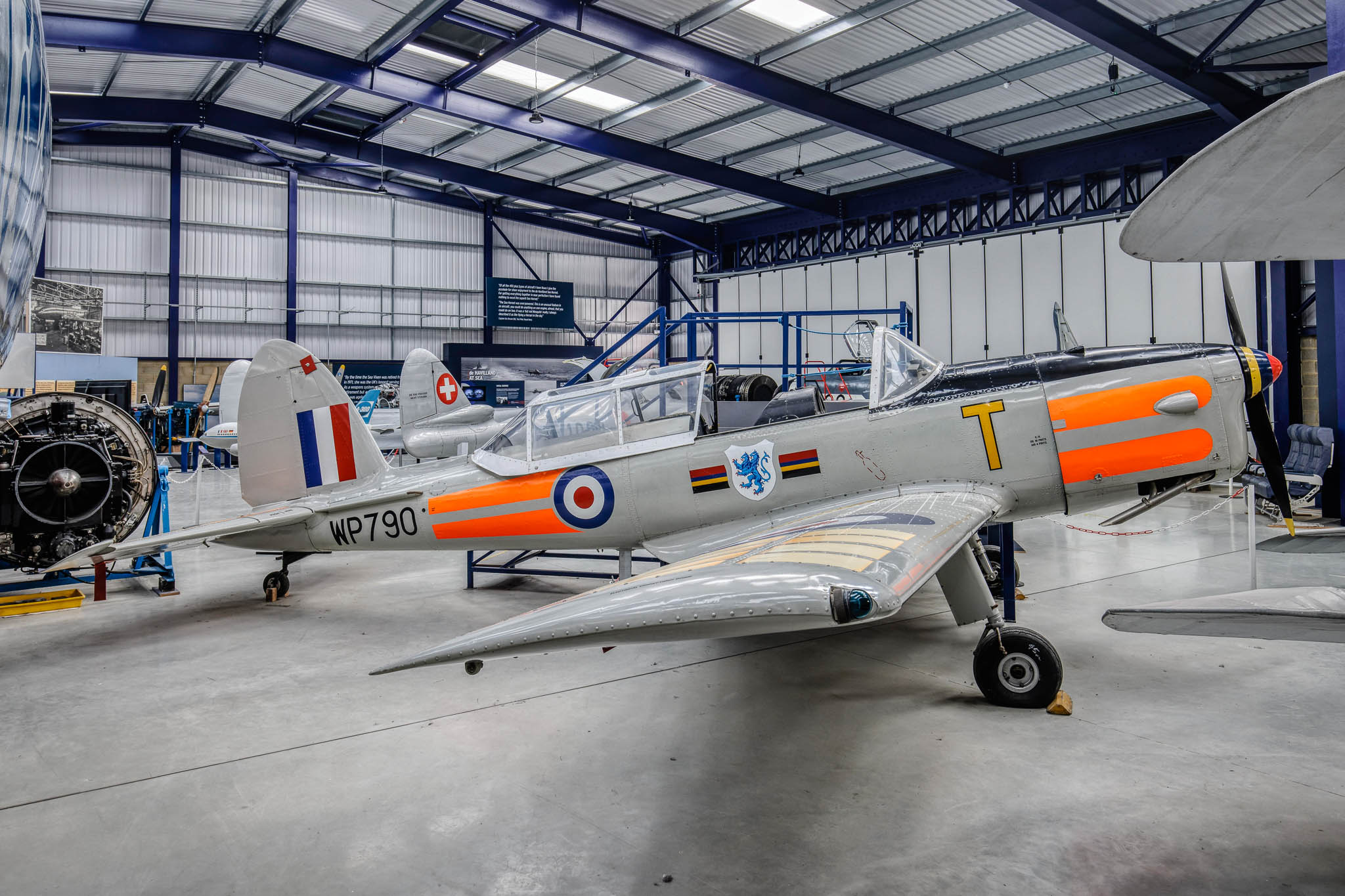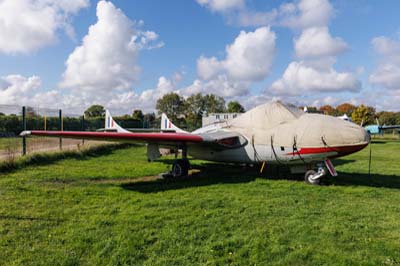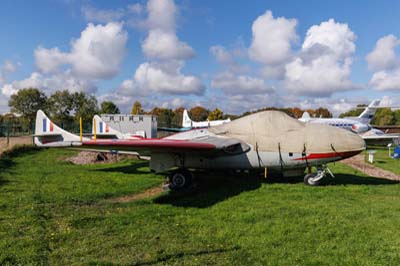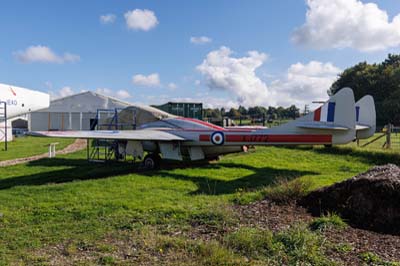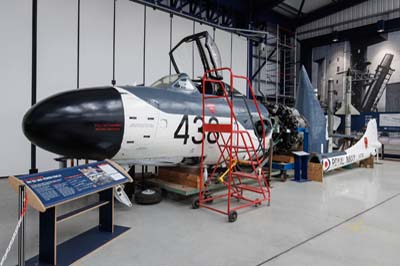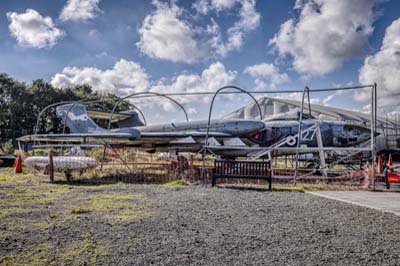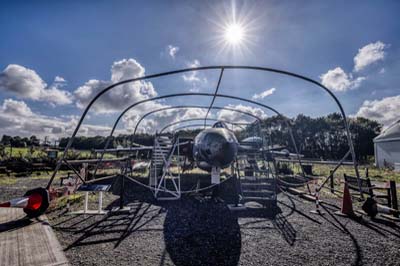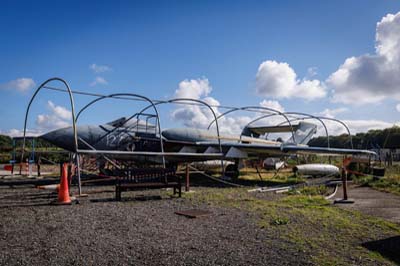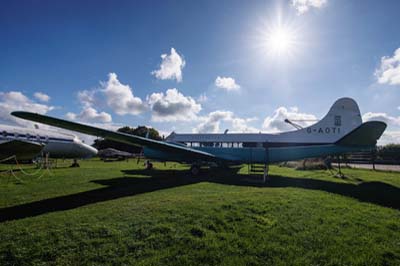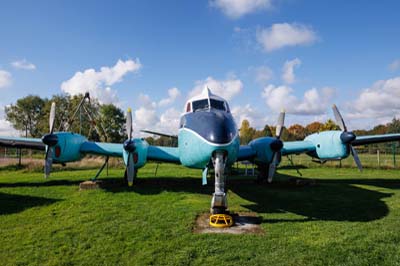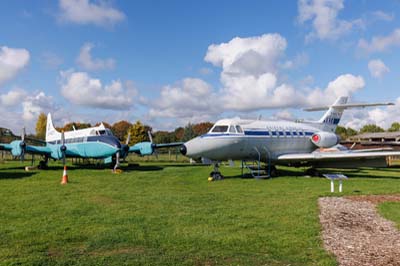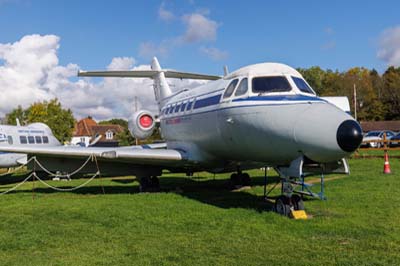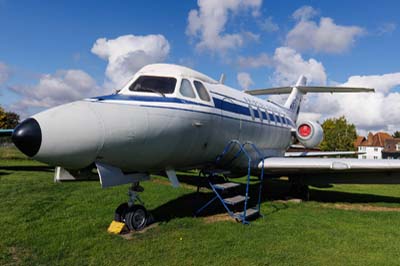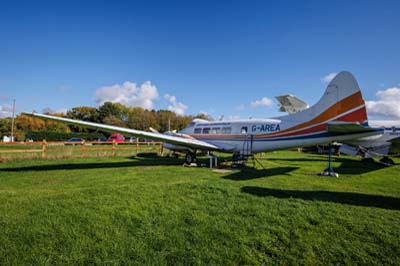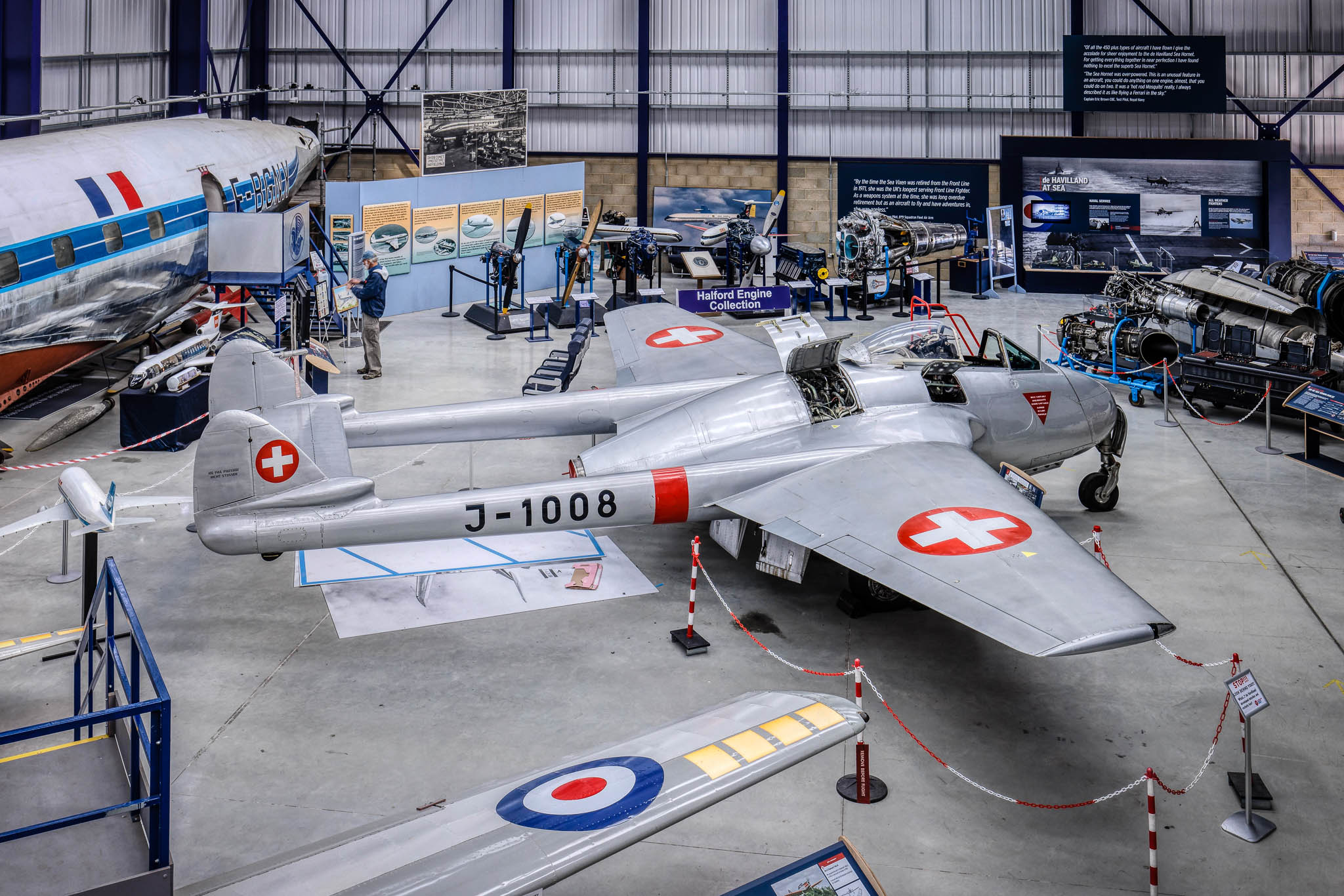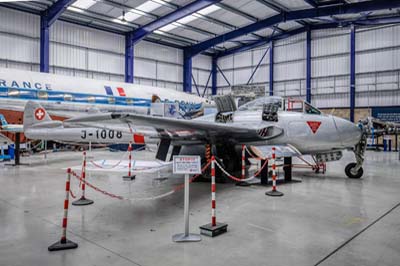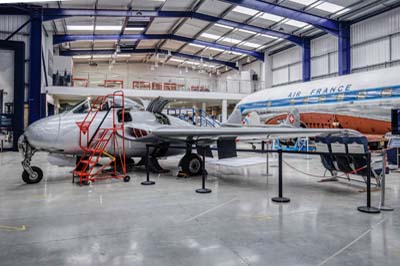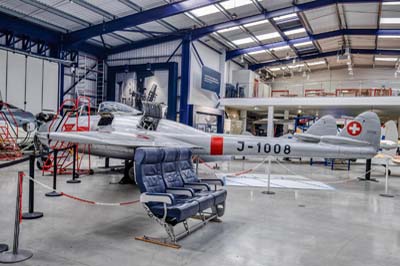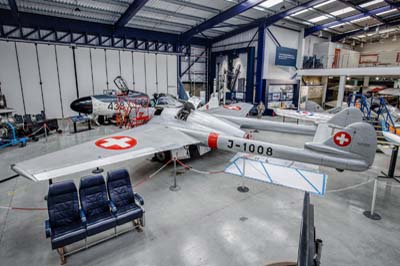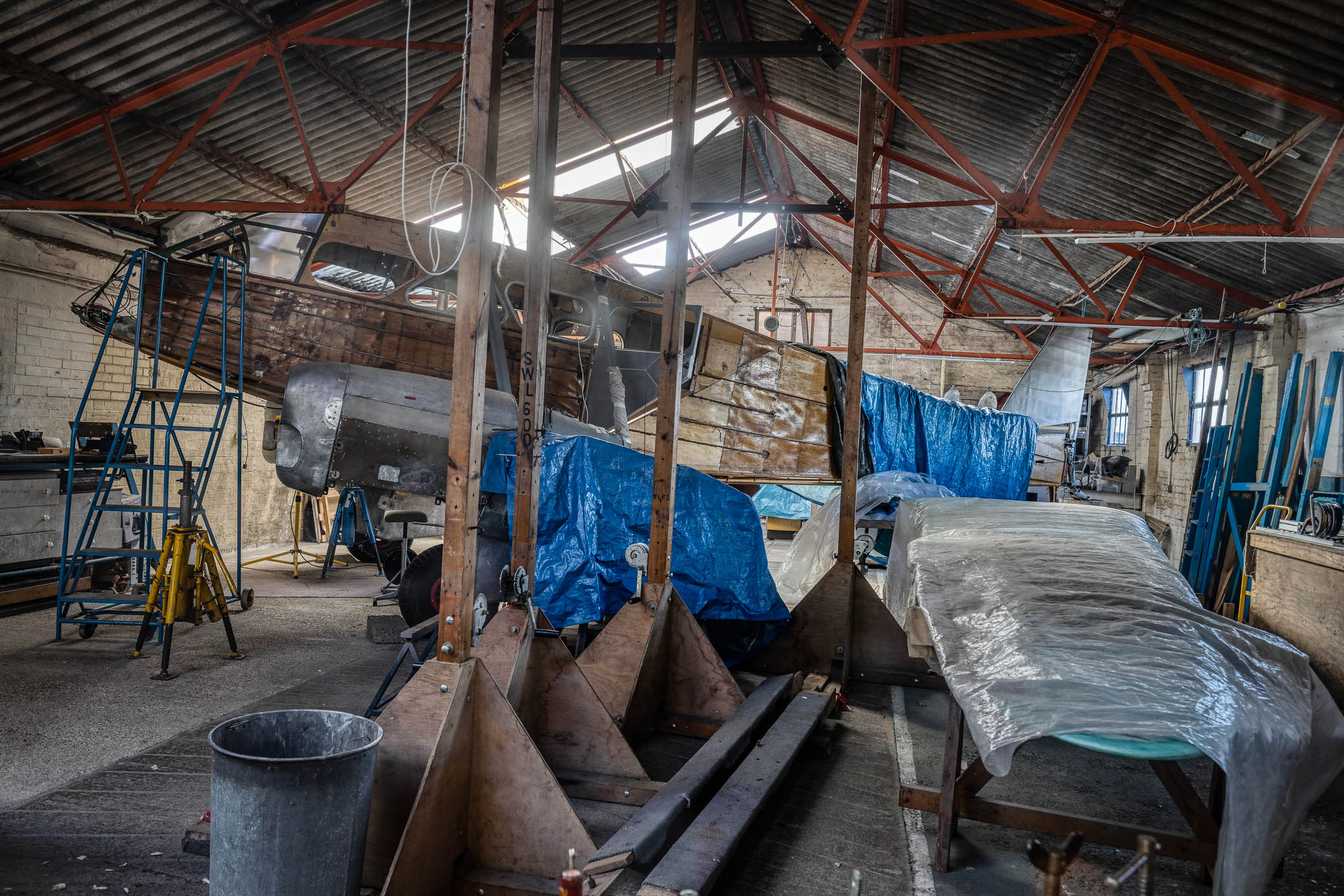de Havilland Aircraft Museum
Salisbury Hall, London Colney
October 13, 2022
|
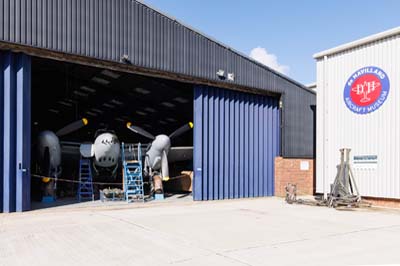 |
The de Havilland Aircraft Museum |
This is a very nice little museum packed full of aircraft and exhibits dedicated to the de Havilland Mosquito. Outstandingly they have three complete Mosquitos on display including the prototype.
Other Mosquito sections with other restoration projects are on show. Many other de Havilland types are also on display here. Indeed it is the largest such museum devoted to one aircraft manufacturer in the United Kingdom. The location also has an interesting history culminating in September 1939, when the de Havilland Aircraft Company established the Mosquito design team in Salisbury Hall (built between 1668 and 1679), alongside the modern day museum hangars. The prototype Mosquito, W4050, subsequently being built in the adjacent buildings, beside of Salisbury Hall, sadly these have since been demolished.
Photography as with many indoor museums these days that are crammed full of aircraft and other exhibits is very difficult even with a 16-35mm wide angle lens. |
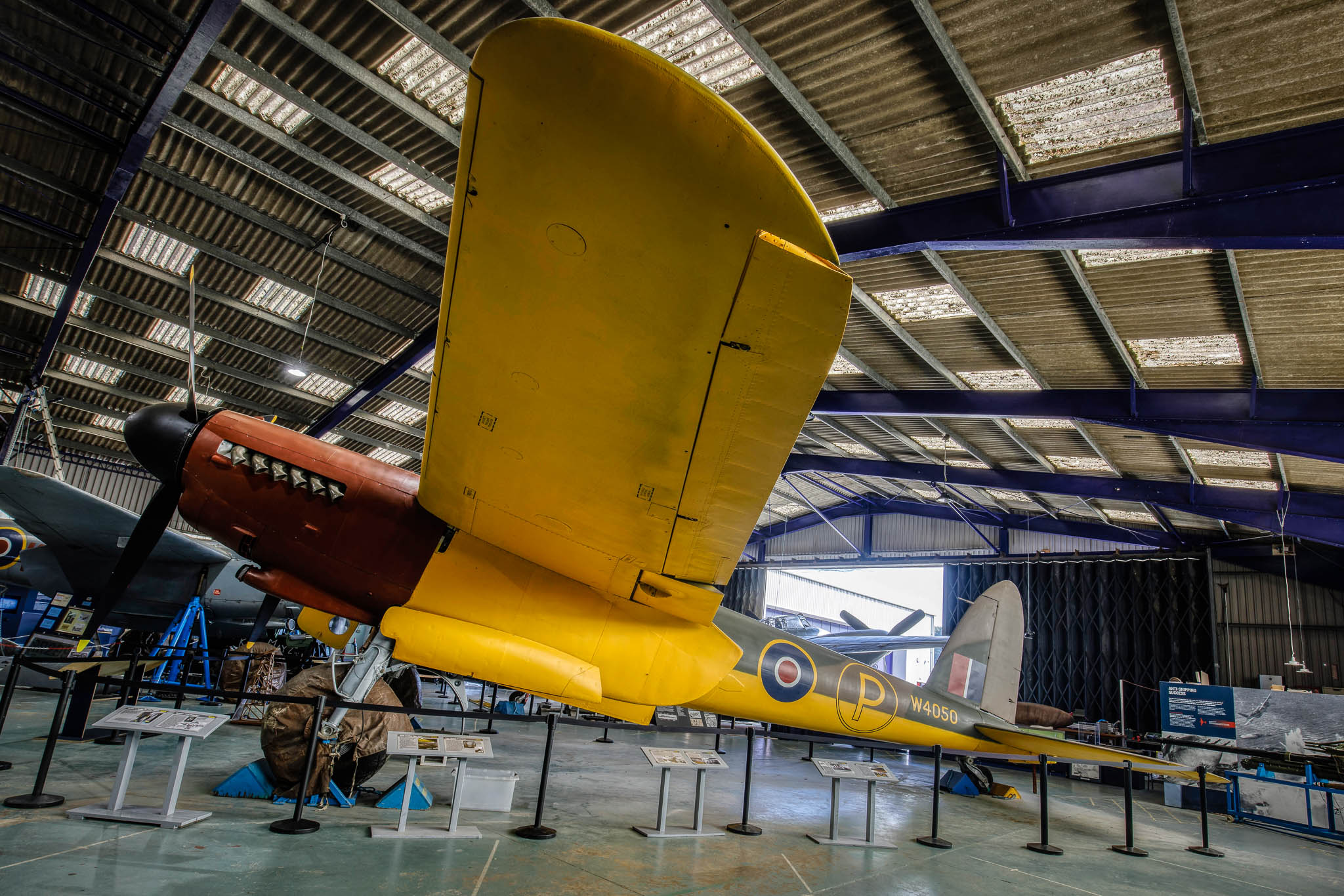 |
| Left to right: de Havilland DH.98 Mosquito Mk.1 (E0234/W4050 c/n 98001). This aircraft is the only surviving World War Two prototype to be preserved in the World. Its first flight was on November 25, 1940 piloted by Geoffrey de Havilland, Jr, with John Walker, designer of the engine installation. Renumbered W4050, it reached an altitude of 22,000ft on January 17, 1941 and was delivered to Boscombe Down with camouflaged upper surfaces and yellow under surfaces for initial service trials. |
| Left to right: de Havilland DH.98 Mosquito Mk.1 (E0234/W4050). |
| Left to right: de Havilland DH.98 Mosquito FB.VI (TA122/TW233 'UP-G'). This airframe was restored using the mainplane from Sea Mosquito TR.33 (TW233) which was recovered from Israel in 1980. |
| Left to right: de Havilland DH.98 Mosquito FB.VI (TA122/TW233 'UP-G'). |
| Left to right: de Havilland DH.98 Mosquito TT(B)35 (TA634 'EG-F' registered G-AWJV). |
| Left to right: Cierva C.24 (G-ABLM). It is on permanent loan from the London Science Museum. |
Left to right: de Havilland DH.87 Hornet Moth (G-ADOT).
de Havilland DH.82 Queen Bee (LF789). Fuselage only. Built in 1943 by Scottish Aviation in Glasgow. The Queen Bee was a remotely controlled version of the Tiger Moth, used as a gunnery training target. It is one of only two surviving Queen Bees. |
| Left to right: de Havilland DH.82 Tiger Moth (G-ANRX). |
| de Havilland Canada DHC-1 Chipmunk T.10 (WP790 'T') |
| Left to right: de Havilland DH.115 Vampire T.11 (XJ772). |
Left to right: de Havilland DH-112 Sea Venom FAW.22 (XG730 '438').
de Havilland DH.110 Sea Vixen FAW.2 (XJ565 'E-127') ex Royal Navy. |
| Left to right: de Havilland DH.114 Heron (G-AOTI). |
Left to right: de Havilland DH.125 Series 1 (G-ARYC).
de Havilland DH.104 Dove 8 (G-AREA). |
| Left to right: de Havilland DH.100 Vampire FB.6 (J-1008) ex Swiss Air Force. |
| de Havilland DH.89A Dragon Rapide (G-AKDW) under restoration in the workshop. |

